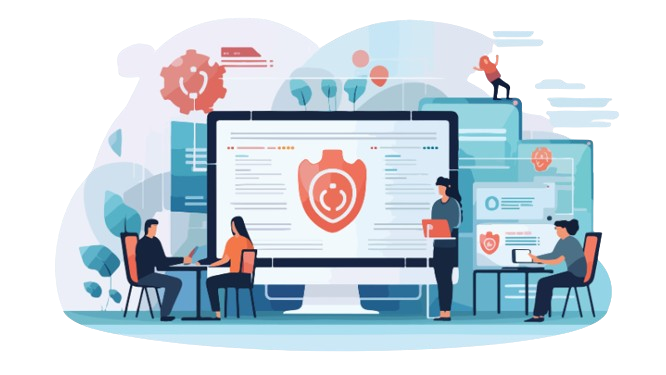Understanding ISO 27001
Information security should be the topmost concern to any organization in the world of data breaches and cyber-attacks. ISO 27001 is the globally recognized standard for ISMS, offering an organized approach toward sensitive data security and improving cybersecurity position. It provides a more systematic way of managing information security risks, including how an organization can provide comprehensive, effective security controls.
At its core, ISO 27001 is a risk management-based approach. The standard requires organizations to identify information security risks, assess those risks, and then treat those risks in an organized manner. This ensures that security measures fit each organization’s needs and context rather than some preconceived notion or one-size-fits-all solution. ISO 27001 allows a company to demonstrate its commitment to information security for its clients, partners, and relevant regulators.
The Comprehensive Benefits of ISO 27001 Certification
Enhancing Security Posture
First, it significantly improves an organization’s security position. Studies show that organizations with ISO 27001 certification recorded 50% fewer security incidents than those without. Reducing the incidence of security breaches protects sensitive data and preserves the company’s reputation and customer trust.


Market Differentiation and Business Growth
ISO 27001 certification can also provide a market differentiator for your business. As data privacy has become one of the primary concerns, clients and partners alike need some form of assurance that there are sufficient information security practices. Certification provides real proof of the organization’s commitment to data protection; hence, it often becomes a factor that helps win new business.
Operational Efficiency and Cost Savings
ISO 27001 implementation also improves operational efficiency. In attaining compliance, it usually reveals the inefficiencies and redundancies of the overall process; thus, it leads to streamlined operations and cost savings. Those organizations that have implemented ISO 27001 reported a considerable average reduction in operational costs related to information security management to 27%.


Simplified Compliance with Other Regulations
ISO 27001 certification might make it easier to follow other regulatory requirements. Many of the controls and processes required by ISO 27001 are mapped with other data protection regulations like GDPR, HIPAA, or PCI DSS. This can reduce compliance pain quite a bit across different standards, saving time and resources.
Essential Steps for ISO 27001 Implementation
ISO 27001 Implementation is a comprehensive process that requires timely and correct preparation and implementation. The process of certification process covers a few key steps, all of which are assumed to be critical in developing an efficient ISMS.
Gaining Support and Scoping the ISMS
First steps include support and scoping of the ISMS. This was by defining what parts of the organization would fall under ISMS and ensuring top management commitment to this process. Without strong leadership support, the implementation process may face many difficulties.
Once the organization has identified the assets, the actual risk analysis should be done in a formal manner. It includes identifying information assets, threat-vulnerability assessment, and impact assessment of the security breach. This risk assessment provides the basis for the ISMS and informs the decisions on selecting security controls.
Performing a Gap Analysis
Once the risk assessment is completed, the next engagement is a gap analysis that compares the existing organizational security practices against the requirements of the ISO 27001 standard. This allows the organisation to determine what would be required to implement any additional controls or processes.
Selecting and Implementing Controls
Where the outcome of the risk assessment and gap analysis has been determined, an organization should then select and implement appropriate controls. ISO 27001 has a comprehensive list in Annex A but does not require the implementation of all controls. It should adopt the controls best linked to its own risks and context.
Developing Policies and Procedures
Another key element of the implementation process involves the development of policies and procedures. The documented policies should outline how information security shall be treated within the organization while correctly guiding the implementation and maintenance of security controls. Documentation is a highly critical component of ISO 27001 compliance, with 35% of audits for certification citing this as a contributory factor.
Implementing a Training and Awareness Program
A training and awareness program provides a good mechanism to ensure all employees understand their roles and responsibilities in maintaining information security. Reports have shown that 95% of all cybersecurity breaches result from human mistakes; hence, comprehensive security awareness training is important.
Conducting Internal Audits and Management Reviews
Internal audits and reviews by management are carried out to determine the effectiveness of the ISMS. It supports the Continuous Improvement Process by showing the spots where improvement is needed. Also, it provides that the ISMS is aligned with the organisation’s objectives and the threat scenarios that are changing daily.
Improve Your Information Security with ISO 27001 Certification!
Contact Lumiverse Solutions today to schedule a free consultation!
Best Practices for ISO 27001 Compliance
ISO 27001 is no doubt a challenging standard to achieve; however, maintaining compliance is a task that requires lots of effort and dedication. The best practices while implementing ISO 27001 compliance will ensure that the ISMS of an organization stays effective and meets the requirements of the standard.

Security Awareness
The most critical best practices in developing and instilling a culture of security awareness within the organization involve providing initial training and periodic refresher courses and updates on new threats and security practices. Organizations with continuous security awareness programs report a 70% reduction in security incidents caused by human error.

Documentation
The other important issue in ISO 27001 compliance is documentation. Full and up-to-date documentation of policies, procedures, and controls required to demonstrate audit compliance is crucial. A best practice is a standardized, systematic approach to document management, ensuring that all relevant information can be easily accessed and is subject to periodic review.

Regular internal audits
The core of ISO 27001 compliance maintenance is regular internal audits. Audits help identify gaps or non-conformities in the ISMS before these become major issues. Best practice suggests that internal audits should be done annually; many organizations perform them more often in critical areas.

Continuous improvement
Continuous improvement is an important aspect of ISO 27001. An organization should have processes in place for regular reviews and updates of the ISMS based on audit results, incident reports, and changes in the threat domain. Such a proactive approach ensures the effectiveness of ISMS and its continued relevance to meet the organisation's growing needs.

Implementing incident management process
Another important best practice is implementing an appropriate incident management process. Having procedures in place not only to respond to security incidents but also to learn from those incidents since continuous enhancement of the ISMS is maintained. Organizations with defined processes for incident management take up to 30% less time to respond to security breaches.
Expert Insights: Overcoming Common Challenges
While the benefits of ISO 27001 certification are crystal clear, the challenges in implementation are considerable. Understanding various challenges and learning from expert insight goes a long way in smoothing the path to successful certification and ongoing compliance.
Resistance to organizational change
One common challenge arises as resistance to organizational change. In most cases, ISO 27001 requires immense changes in the current processes and practices that get highly questioned or resisted by the employees. Experts state that such a challenge can be resolved by efficiently communicating benefits brought by ISO 27001 implementation and involving employees in the implementation process.
Resource constraints
Resource constraints can also be an obstacle in time and budget. To a great extent, implementing ISO 27001 requires big investments; thus, finding free resources may be problematic for an organization. According to experts, the recommended line of action is to build up the system step by step, beginning with areas of the highest priority, gradually expanding the scope of the ISMS.
Navigating Complex Organizational Structures
All this is often difficult to achieve in larger organizations or organizations with complicated, intricate structures. Setting milestones and marking achievements by celebrating the same are some recommendations to keep the team motivated. Appoint a highly experienced project manager who can guide the implementation and help it stay on course.
Leveraging Expertise in ISO 27001 Standards
It is important to have expertise in interpreting and applying the ISO 27001 standard. This is especially difficult for organizations without previous experience in information security management; guidance by experienced consultants or attendance at special training courses can be of particular value.
Keeping Up with Emerging Threats and Technologies
There is a constant need to keep up with growing threats and technologies. Experts stress that the knowledge of arising risks must be continuously updated and that periodically, the adopted security controls of the organization should be reevaluated. Industry networking, participation in security forums, and threat intelligence services are some of the useful means through which an organization can retain its edge.
